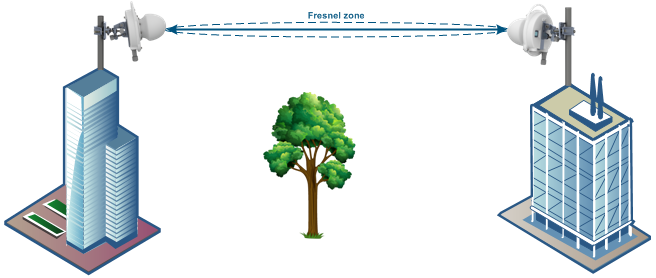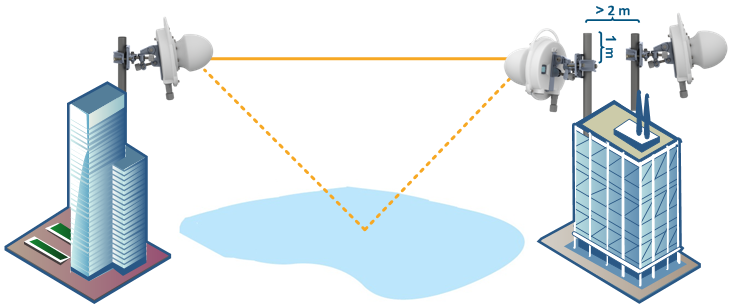During link planning, such factors as distance, obstacles, humidity, temperature, atmosphere pressure and the link margin should be taken into account. Radio waves in the 71-76 GHz frequency range encounter additional atmospheric attenuation beyond that which is expected in free space due to water absorption, including rain fade. The amount of additional atmospheric attenuation will vary, depending on your specific installation environment. So we strongly recommend to use the InfiPLANNER tool for link planning where the rain impact is taken into account.
InfiPLANNER
InfiPLANNER is a link planning tool, which allows to design networks using Infinet Wireless devices for optimal deployment and cost effectiveness. It accounts for different scenarios based on geography, distance, antenna height, transmit power, device models and other factors. It outputs an installation report that defines the parameters to be used for configuration, alignment and operation. Use the installation report to compare the predicted performance with the actual link performance. InfiPLANNER is available at https://infiplanner.infinetwireless.com.
NOTE
You can find more detailed information about InfiPLANNER in the "InfiPLANNER: Link Planning Tool" online course.
Range and obstacles
Make sure that line of sight is provided when planning the device placement for a point-to-point link in order to achieve maximum range and performance between two devices. Perform a survey to identify all the obstructions (such as trees or buildings) in the path and to assess the risk of interference.
Below is an incomplete list of possible obstructions along the signal propagation path:
- Neighboring buildings.
- Trees.
- Bridges.
- Power lines.
NOTE
More detailed information about radio signal propagation is available at "Wireless Networking Fundamentals" online course.
Wireless device installation
General recommendations for device installation:
- Keep 100% clear line of sight between devices. In case of installations over vegetation and forest, make sure the direct line of sight stays above the trees; in urban environments - above the tallest buildings along the radio path.
- Install wireless devices as far as possible from other radio devices (the recommended distance is at least 2 meters).
- Reflecting surfaces should be considered (buildings with reflective windows, water surfaces or wet grounds). These can also decrease the signal quality when encountered along a clear line of sight link, because of fading caused by multipath propagation.
- When installing wireless devices over the water, tune the height bracket within a 1-3 meters range variation, because it can yield significant signal level variations due to multipath fading.

